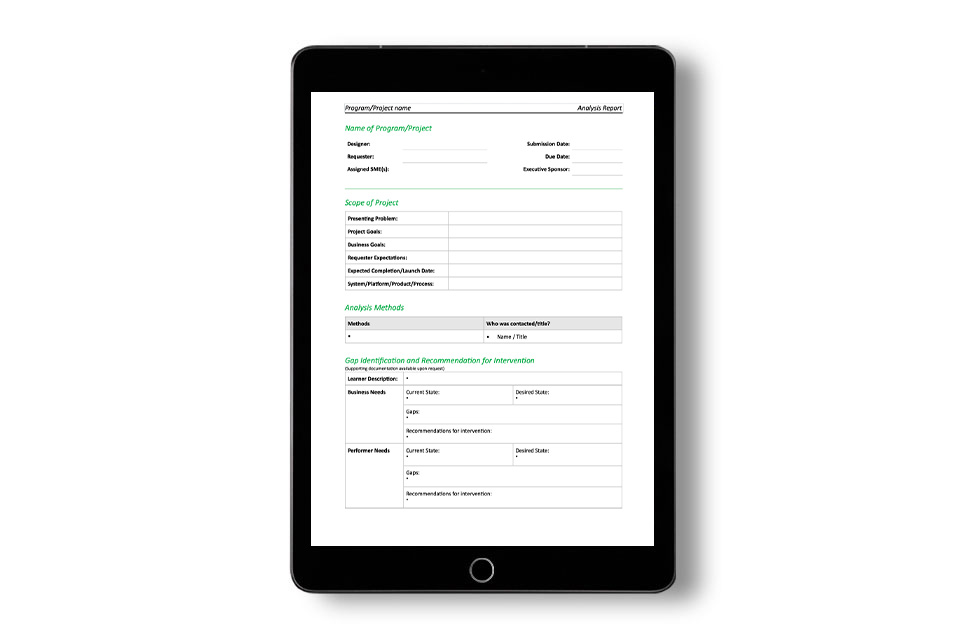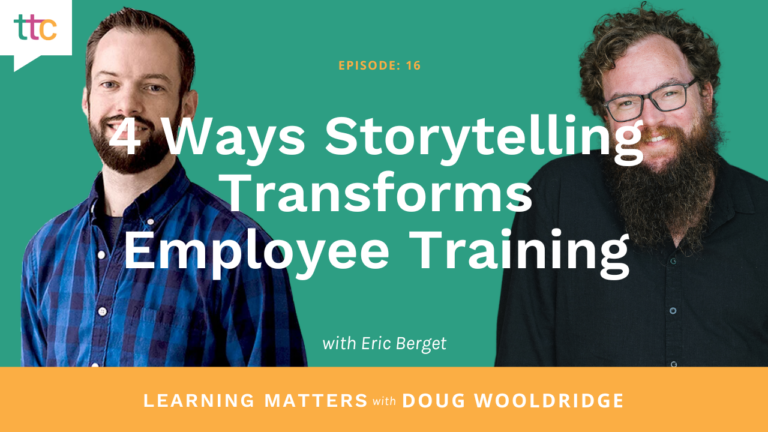In today’s rapidly evolving business landscape, the importance of an adaptable and efficient Learning and Development (L&D) team cannot be overstated. Understanding the best approach to staffing these teams, both for short-term and long-term requirements, is paramount. I’d like to share four essential strategies to help you pinpoint both short-term and long-term staffing requirements and decide on the most suitable staffing approach for your team, your work environment, and the unique circumstances you face.
Let’s delve into what I like to call the Big Four.
1. Setting the Vision — Identify L&D Goals, Skill Gaps, and Training Requirements
Success demands a clear vision and purpose. View your team as a unit striving toward success. To reach these milestones effectively, you need a well-defined strategy. Let’s start at the highest level, your team, and review the elements crucial to set your vision.
Here are three questions to ask as you explore the L&D Landscape:
- What are your team’s goals to support your company in its continuous growth?
- What skill sets does your team need to possess to support that growth, especially considering the ever-present emerging technologies?
- Does your team have the capability to maintain momentum with the volume of work required to propel your company forward?
This isn’t just about addressing current challenges; it’s about setting a vision for the future. Your organizational focus should consistently align with success.
Understanding the Landscape:
For any journey to be fruitful, a thorough understanding of the landscape you’re maneuvering through is crucial. An in-depth Training Needs Analysis to ensure your Learning and Development initiatives are precise and relevant is indispensable.
Ponder over these essential factors when new requests emerge:
- Alignment with Organizational Goals: Does the request match your company’s goals and your team’s overarching strategy to support those goals?
- Prioritization: Not every training request will hold equal weight. Can you discern the true priorities based on your strategy, and recognize which truly warrants attention?
- Learning Objectives: Establish clear learning objectives for every training initiative. This offers direction, ensuring resources are utilized efficiently and desired results are achieved.
- Design and Development Needs: Determine the best solution for the subject matter, learner demographics, and the intended outcomes. This outlines the competencies required of your team to produce successful learning programs.
- Resource Allocation: Strategize how you’ll allocate your team for each request. Assess if you have sufficient capacity, the appropriate skill set, and competencies.
As you navigate through each new learning initiative, you’ll have the answers to how your team needs to be prepared to handle any challenges you may face along the way.

FREE Download!
Use the following mini analysis template form when assessing the needs, goals, and expectations of your next project!
2. Understanding Talent Needs and Addressing Skill Deficiencies
As you identify your company’s training needs, you gain valuable insights into how these needs impact your team and resource allocation. This phase serves as the roadmap that steers your decisions, determining whether your approach should lean towards outsourcing or recruiting new team members. It’s a critical choice that molds your overall staffing strategy.
Consider these seven guiding principles:
- Scope and Duration: What’s the breadth and timeline of each initiative slated for the year?
- Specific Skills and Experience: What unique skills and experiences will be required of your learning team?
- Budget and its Nature: Do you have the necessary funds (budget), and in what manner?
- Fluctuating Workloads: Will your workload increase and decrease intermittently?
- Speed of Adaptation: How quickly can you modify your team size to meet evolving needs?
- Organizational Culture: What is the culture of your organization, and how can we ensure cohesion among team members?
- Management and Oversight: What level of supervision and guidance is required throughout?
In this dynamic era, a varied range of L&D resources with specialized skills is essential. Think of your team as a collective of experts, each offering a distinct perspective and expertise to every project.
3. Building a Team that Operates Cohesively and Drives Innovation
Cultural alignment acts as the momentum behind your progress, ensuring individuals meld effortlessly within your team. It’s about more than just finding people (or staffing partners) who “fit in”; it’s about creating a unified team that aligns harmoniously with your core values and mission.
Here are four crucial factors to nurture a balanced team and ensure cultural alignment:
- Defining Your Ideal Team Member (this includes both employees and staffing partners): Start by outlining a detailed profile of the ideal team member for your organization. What attributes and behaviors characterize someone who excels within your distinct company culture?
- Emphasizing Soft Skills: Beyond their technical prowess and qualifications, focus on the soft skills – the unseen forces that guide the team. Communication, teamwork, adaptability, and empathy act as pillars directing you towards cultural harmony.
- Synchronizing Team Dynamics: Investigate the traits, skills, and experiences that can complement your team’s strengths and foster a positive working environment.
- Aligning with Business Partners: If the individual liaises with your business partners, keep in mind your partners’ work methods and preferences. Ensure that the selected individual can bridge gaps and collaborate effectively with your partners.
By employing these strategies, you’ll foster an innovative culture poised to take your organization to new heights.
4. Adapting to Change and Ensuring Future-Readiness in Your Staffing Strategies
You might have noticed the HUGE transformation in the L&D world. New learning theories, cutting-edge technologies, and the changing preferences of learners are reshaping how you design and deliver training. In this era, L&D isn’t just about what you know; it’s about how quickly you can adapt and evolve.
Here are four ways you can adapt and evolve to manage change and ensure your staffing strategies remain relevant.
- The Art of Agile Staffing: Embracing agile staffing is essential. Agile staffing means having the nimbleness to respond to changing needs swiftly. It involves flexibly sourcing talent with full-time team members, skilled contractors, or a dynamic combination of both. This approach empowers you to adjust your team size to meet the constantly changing demands.
- Keeping Pace with Technological Advancements: Technologies like AI, VR, AR, and data analytics are transforming the L&D landscapte. To ensure future-ready staffing strategies, you must be prepared to incorporate talent with expertise in these areas or invest in upskilling your current team.
- Building a Strong Talent Network: To move confidently into the future, you must actively monitor trends and developments in the L&D field, always prepared to adapt as needed. This may involve upskilling your current team, recruiting specialists, or partnering with external experts. A solid talent pipeline ensures you have access to a pool of skilled professionals ready to meet your evolving needs. This proactive approach allows you to respond promptly to changing demands and emerging opportunities.
- Fostering a Culture of Adaptation: Beyond tools and technology, it’s about nurturing a culture of innovation and adaptability. Encouraging your team to embrace new ideas and methodologies is fundamental to ensuring future-ready staffing strategies.
As you move forward, embrace the winds of change, adapt to innovative shifts, and head towards a future where your team excels, and your goals are achieved. With “The Big 4” strategies at your disposal, you have the key insights to guide your impactful staffing decisions.
Catch the replay of Elevate Your L&D Team: The Art and Science of Working with Staffing Providers for more valuable insights and practical strategies to help you navigate the complexities of hiring L&D Staffing Providers.

On-Demand Webinar
In Elevate Your L&D Team: The Art and Science of Working with Staffing Providers, we’re sharing a comprehensive roadmap to help you navigate the complexities of hiring L&D Staffing Providers with valuable insights and practical strategies for staffing your L&D team.







